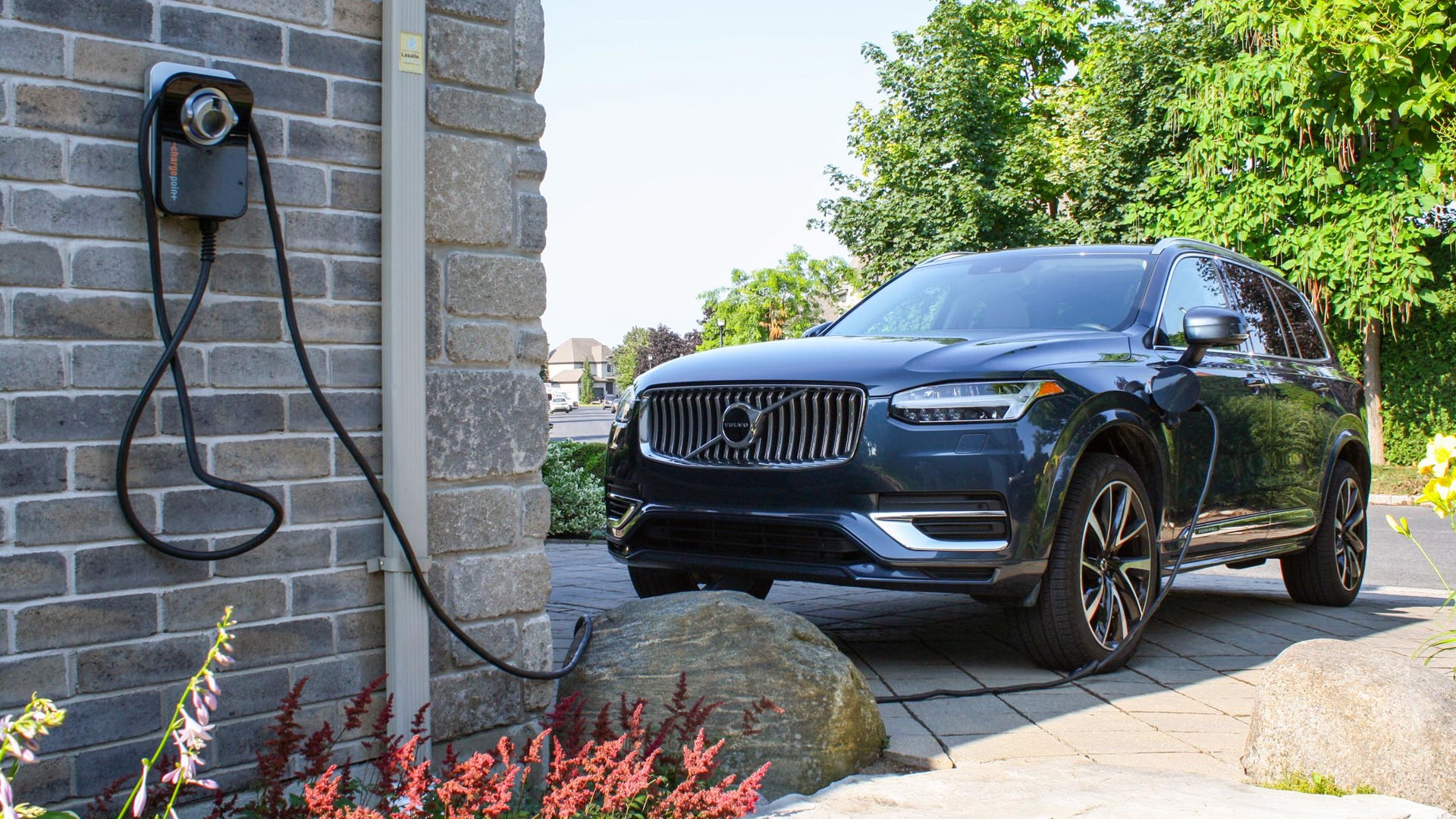Story by Sami Haj-Assaad. Photography by Daniel Beaulieu and Justin Pritchard.
The selection of electric vehicles (EVs) has grown quite significantly over the past few years, and more EVs seem to be revealed and announced almost weekly. Drivers have plenty of options when it comes to buying EVs, but buying one comes with a few additional considerations, specifically regarding how you’ll keep it charged.
While driving an EV might seem to make the most sense in the city, EV ownership seems to favour homeowners who can charge the vehicle at home. There’s a lot of information you should know about charging an EV and a few options you should be aware of when it comes to plugging in. Here’s everything you need to know about charging an EV at home.
Slow and Easy: Level 1 Charging
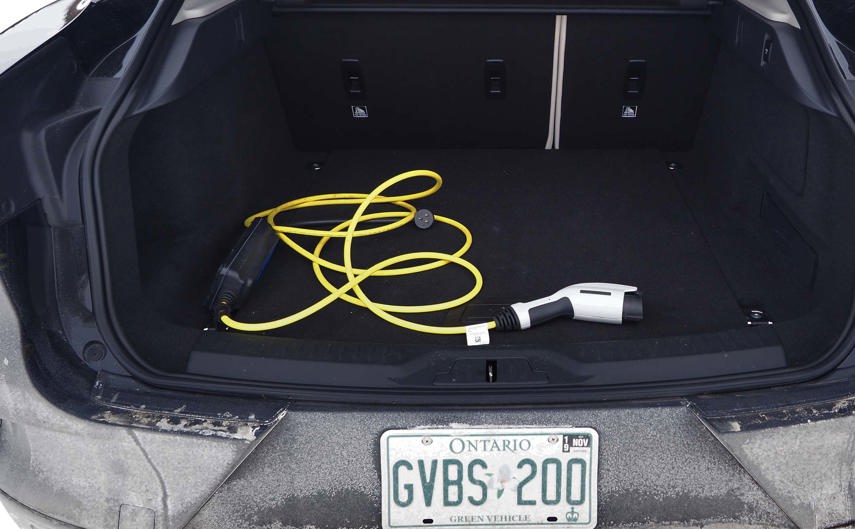
Before you break out your wallet, know that you can charge your vehicle without having to buy any extra gear, but it will be quite slow. All EVs and plug-in hybrids (PHEVs) come with a portable charging cable that plugs into a standard household outlet, letting you get some range for your vehicle without additional costs, gear, or installation. Known as Level 1 charging, this is the slowest form of recharging an EV.
Level 1 charging makes sense for owners of plug-in hybrids, which feature relatively small electric battery packs and limited electric-only range. For example, the Toyota RAV4 Prime plug-in hybrid offers just 68 kilometres of electric range, but a total range beyond 900 km when the internal combustion gas engine is taken into account. Recharging its electric battery using a standard 120-volt outlet and the provided cable would take 12 hours. That works out to about five and a half kilometres per hour of charging.
For those with pure electric vehicles, the wait is even longer. The Chevrolet Bolt EV uses a large, 66-kWh battery that provides 417 km of range. Charging this battery on a household outlet takes a long time, measured in days rather than hours. The rate is roughly six kilometres per hour of charging.
While Level 1 charging is slow, it is affordable, accessible, and ideal for those who use their vehicles occasionally, which allows their EV to charge for hours – maybe even days – at a time if needed.
Convenient: Level 2 Charging
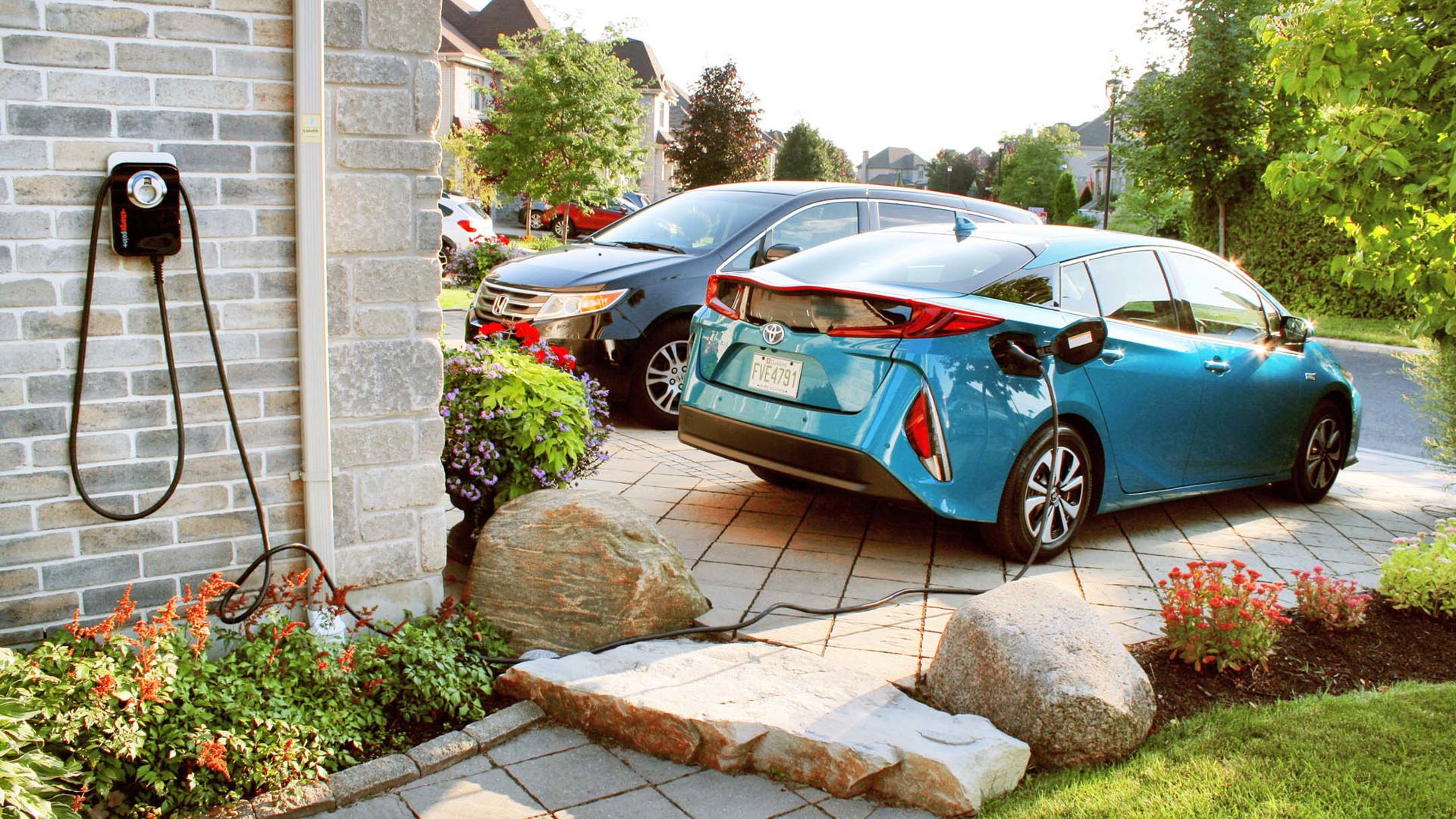
Those slow charging rates can be inconvenient, which is why an EV owner may want to install a Level 2 charger in their home. At the very least, a Level 2 charger can cut charge times in half versus Level 1 charging, making it far more convenient. In most cases, you’ll see about 30 kilometres per hour of charging. That means the Toyota RAV4 Prime could fully recharge in less than three hours. The Chevrolet Bolt EV is rated to take just over eight hours to charge its large battery, so you can fully charge a depleted battery during your workday or overnight.
How Much Will It Cost?
Level 2 chargers require a 240-volt outlet with at least 30 amps, though 40 amps is more common. These requirements are similar to a clothes dryer or stove. Any certified electrician should be able to install one of these outlets or even install and hardwire a charging station into your home. Even the most straightforward installation of a hardwired charger can cost about $300, so make sure to budget for that.
Those looking to get a Level 2 charger for their home should know that the prices vary quite a bit depending on the speed and power of the unit and whether or not they need to be hardwired into the house’s electrical circuitry. It will be more affordable if you have an existing and compatible electric outlet to take advantage of. Many popular chargers are available for about $800 and can be found at most hardware stores like Home Depot or even online on platforms like Amazon. You can find discounts during seasonal sales on Black Friday or Boxing Day, but if you find a unit for a price that seems too good to be true, take a close look at the specifications because they may be selling the cable separately.
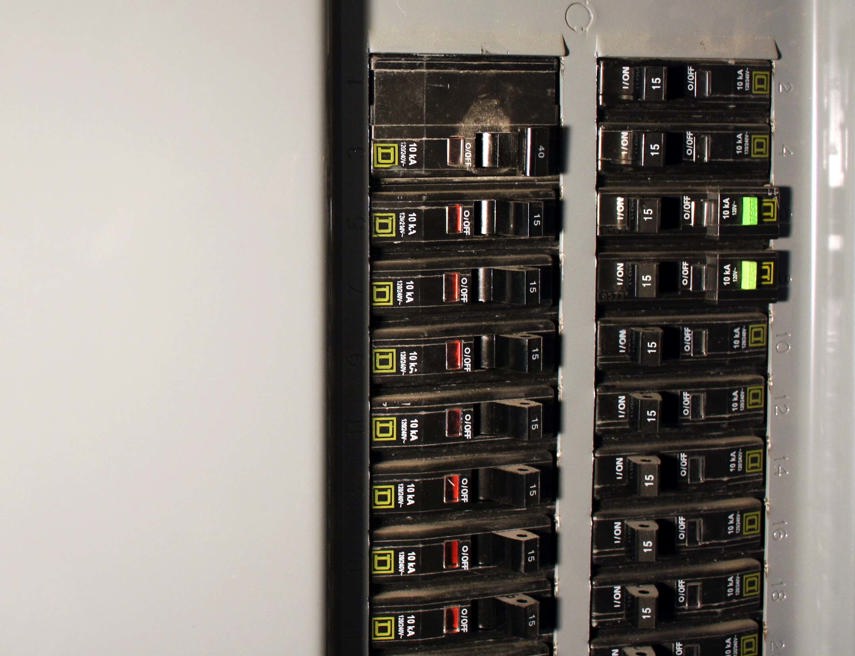
The cost of buying and paying to install a Level 2 charger might seem a bit steep, but as a long-term investment, charging at home is the most economical and convenient way to operate an EV, especially when compared to paying for public charging, so it will pay itself off eventually and might even add to the resale value of your home one day.
Fortunately, there are also some resources buyers can take advantage of to help with the costs associated with installing a home charger. Some provinces have incentives to encourage car buyers to consider going electric. Alberta, British Columbia, the Northwest Territories, Nova Scotia, Quebec, and the Yukon all have programs providing a tax rebate for people who install a home charger.
It’s also worth mentioning that Chevrolet is offering to cover a portion of the costs of buying and installing a home charger for anyone who buys a new Bolt EUV or Bolt EV.
Finally, it’s worth pointing out that charging at home isn’t exactly free – you will get charged by your utility company for using that extra power, and that cost will fluctuate depending on when you plug in. You’ve probably heard of time-of-use or peak pricing, which is when the utility company charges you more when you use electricity during the day because of increased demand. Conversely, it costs less to use electricity during off-peak hours like in the evening when there’s less demand, so it will be cheaper to plug your car in overnight to recharge. Most EVs and PHEVs allow you to set a timer so you can plug it in at any time, but it won’t start charging until the off-peak hours you specify.
What Types of Level 2 Charging Are There? What Are the Requirements?
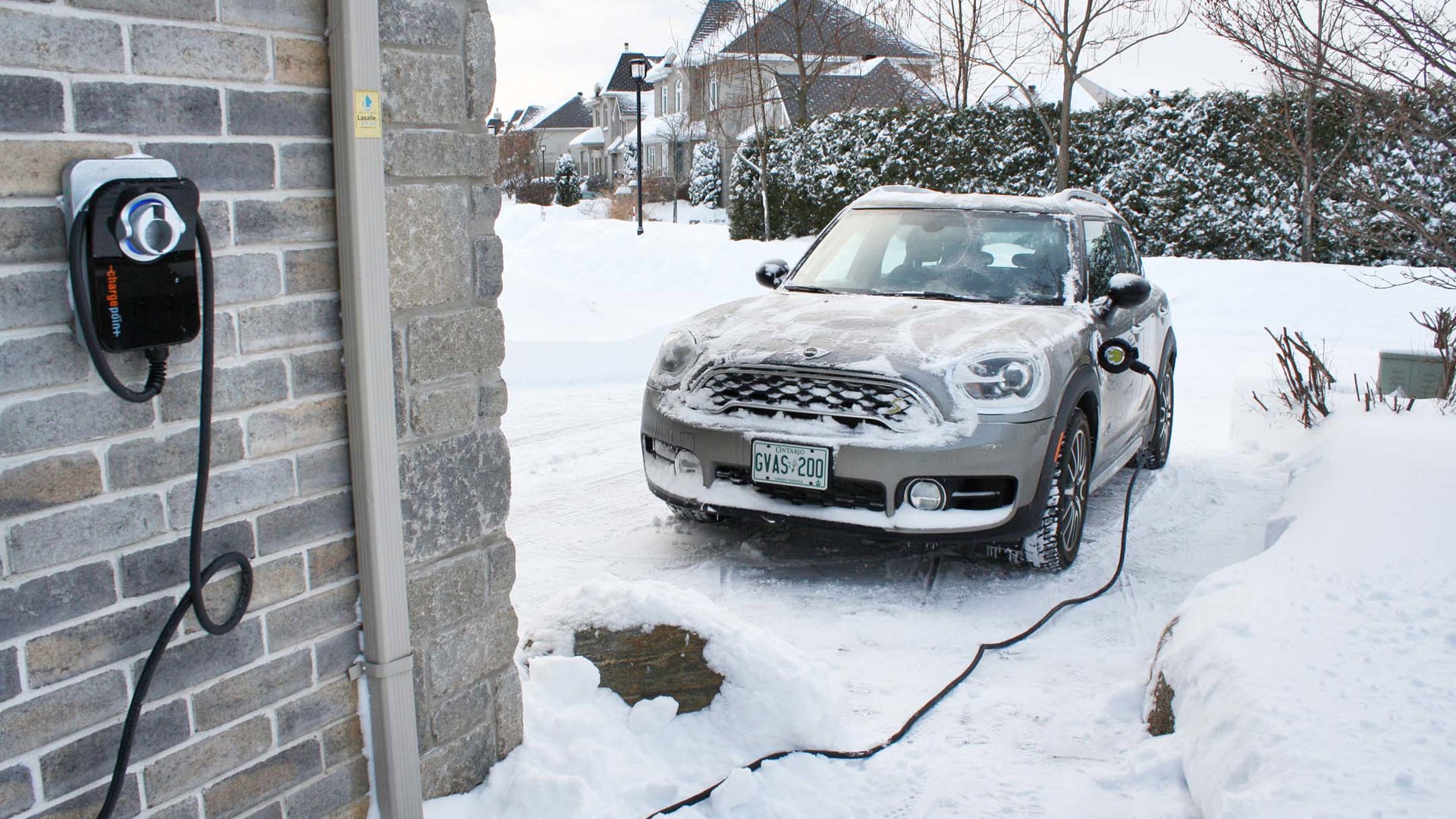
There are numerous options for Level 2 home chargers, and the first thing you should take note of is the charging rate of the station and what your vehicle can accept. The higher the rate, the faster the charge, and the shorter the recharge time. Most EVs can take at least a six-kilowatt charge rate, while others can accept up to 11 kW. Note that if your vehicle can only handle six kilowatts, it will not charge any faster even if your Level 2 charger can go higher.
Next, you should identify where you’ll install your Level 2 charger. Is it in a garage or outdoors? Outdoor charging stations are specially designed to handle the elements – it’s going to be handling a large amount of electricity after all, and you want it to be weatherproof. If you’re charging your vehicle outdoors, you may want a charger with a locking feature, so no one tampers with your cables. Additionally, different chargers have different cable lengths, so measure the distance between your car’s charging port and the charging station and make sure you get a cable that’s long enough.
Next, decide if you’re going to hardwire the charger and have it permanently installed versus just plugging it in and mounting it on the wall. If you have a pre-existing 240-volt outlet to use, plugging in a Level 2 charger in will be a much easier and affordable solution, and it also gives you the option of taking it with you if you move or sell your home, as well as allowing easy replacement if you upgrade your charger down the road.
If you’re using an existing 240-volt outlet, take a closer look at the receptacle. Possible outlet types include NEMA 14-50P (four-pronged, commonly used for electric stoves) and NEMA 6-50P (three-pronged, a common outlet for welder plugs), though many others exist. Pick a charger with the appropriate plug for your outlet to prevent headaches during installation.
Some Level 2 chargers also offer features that allow you to see and control your vehicle’s state of charge from an app, through Bluetooth, or using your home’s Wi-Fi setup. Some EVs also have these features, however, so check to see if your vehicle already has them before you drop the extra cash on a wall charger that does the same thing.
What if I Live in a Condo or Apartment?
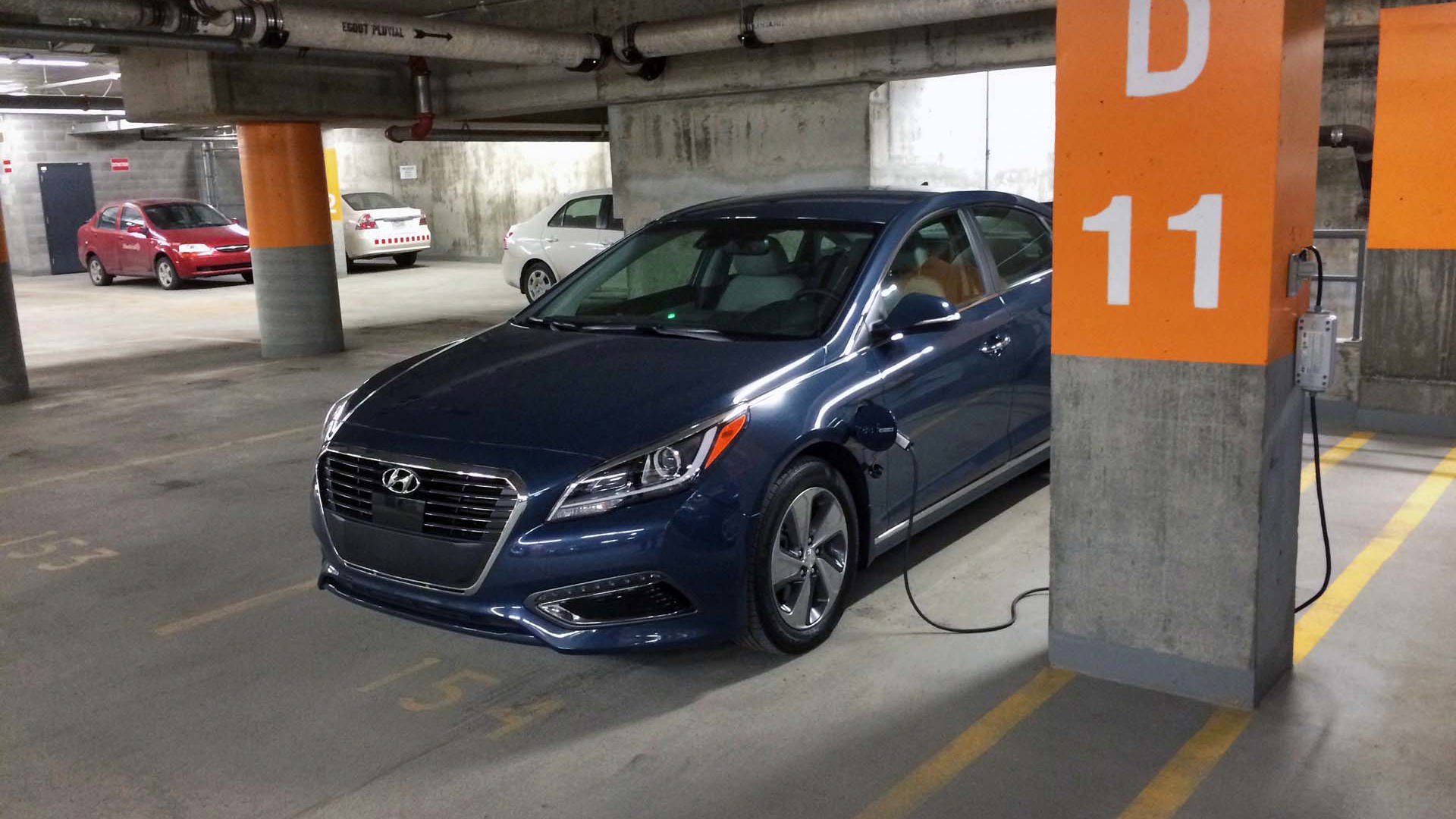
Those interested in getting a home charger in their condo, apartment, or townhouse complex will have to present a plan to their board. One handy starting point is Murbly, where you can find educational resources, guides, and tools to help implement electric vehicle charging in multi-unit residential buildings. You can tell them about the incentives to cover the costs, that they can charge residents to use it so it will pay for itself and become a revenue source for the building, and that it might even help increase property values.
Final Thoughts
Charging at home is the most convenient and economical way to own an electric vehicle or PHEV. It might seem complicated at first, but getting a home charger is a worthy investment, and we hope this article helped you identify some considerations you need to make for your unique situation before making the jump into the EV lifestyle.
